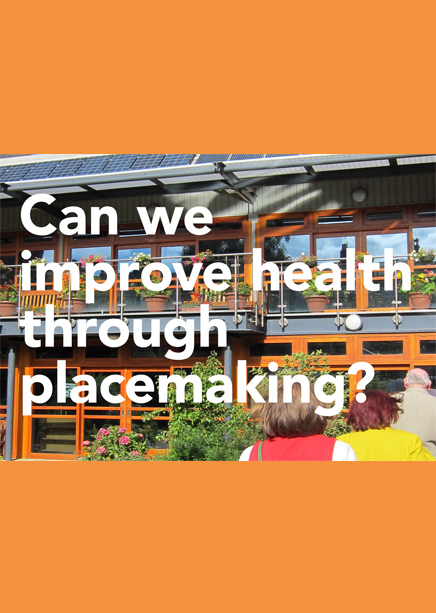Written by:
Last Wednesday, October 9th, we opened our 2013/14 Debate Series Place Potential by asking our Scottish audience to respond to the provocation – can we improve health through placemaking?
The choice of this theme was in part inspired by the words of Rev. Christopher Rowe at our Glasgow debate in October 2012 who opened his provocation with the statement – “Crap places kill people” – and by the leadership shown by the Scottish government in developing a strategy – Good Places, Better Health – that sets out to address how our places influence and affect our health.
This year our Debate Series is exploring how through collaboration, we can unlock the potential of place and of people in place. What came across more than anything else at this first debate of the series was that people, education and choice have a huge role to play in how we live our lives.
Our three speakers represented three different sides of the relationship between health and wellbeing and place. Sheila Beck, a Principal Public Health Adviser with NHS Health Scotland responded to Rowe’s 2012 statement by acknowledging that place is an important influence on our health but it is only part of the story. For her, there is complex interaction of all sorts of factors – availability of good work, educational attainment, local services etc. While society has made huge strides in tackling the air and water supply problems of previous centuries, Sheila believes action on place has lost steam.
As a former nurse and a campaigner for the rights of disabled to safe, independent living and opportunities, Linda McLean’s provocation was that crap places kill you but only if you let them. Linda shared with the audience the story of a disabled man for whom she cared and with whom she fought tirelessly for his right to a place to live that was not only suitable for his needs, but also provided him with safety and security. Linda’s provocation also raised the gaps in education and awareness around our collective relationship and understanding of how place can affect our health and more simply, in the differences in how we live our lives as individuals, whether able bodied or not.
Andrew Burrell is an architect/developer with significant experience on both sides of the development process and his provocation to the audience was that it is crap people who kill places. He cited various guidance documents, policies and strategies in existence, with reference to the Scottish context (e.g. Good Places, Better Health; Creating Places; Designing Streets) that demonstrate that we know ways in which to support the development of great places, but more often than not, lack the commitment or determination to implement them.
A number of audience members spoke about the effect of how we live our lives on our health – from how our environments are predominantly designed for the car and not for walking and cycling, which makes us less aware of place, to the effect that central heating has had on our activity, now spending the majority of our time indoors. Meanwhile children nowadays do not have as many opportunities to play freely in their neighbourhoods, rather their time is constantly structured, restricting their interaction with place.
Processes and their limitations were much discussed. One audience member despaired that “we don’t teach children to collaborate” – which touched on the core of this year’s theme and the fundamental way of working that we support and promote as an organisation. Members of Fountainbridge Canalside Initiative, a project we supported in 2012, shared their experience of working collaboratively with a range of stakeholders including commercial developers, in their efforts to create a sustainable and vibrant neighbourhood in an area with a rich industrial history in the city of Edinburgh.
Diarmaid Lawlor of Architecture and Design Scotland (one of our local partners) spoke of the failures of policies to be carried through and implemented at the local level and he signalled his support for informal tacit governance, highlighting the cooperative and community led efforts of a community in Neilston, Scotland. Speaking of her experience as a public health adviser, Linda acknowledged the need to bring together many different professions to work together in order for a policy such as Good Places, Better Health to make a difference.
Many attendees shared internationals exemplars for healthier living such as in cooperative and self build housing initiatives in Tübingen in Germany and in Holland, initiatives that are becoming more popular in the UK today.
Overall better education and awareness of the effect of place on our health was the unanimous goal for everyone in the room if placemaking is to better support our health and wellbeing. Ultimately, as put by speaker Andrew Burrell, we should ask ourselves what we want to do, rather than how we can do it.
Read two other responses to ‘Can we improve health through placemaking?’, in think pieces by Matt Bridgestock and Steven Tolson.
The Glass-House Debate Series 2013/14 Place Potential continues with:
Newcastle on 20 November 2013 – Can young people be placemakers?
Bristol on 5 February 2014 – Should we build less and resuse more?
London on 12 March 2014 – Can housing be a catalyst for great places?
